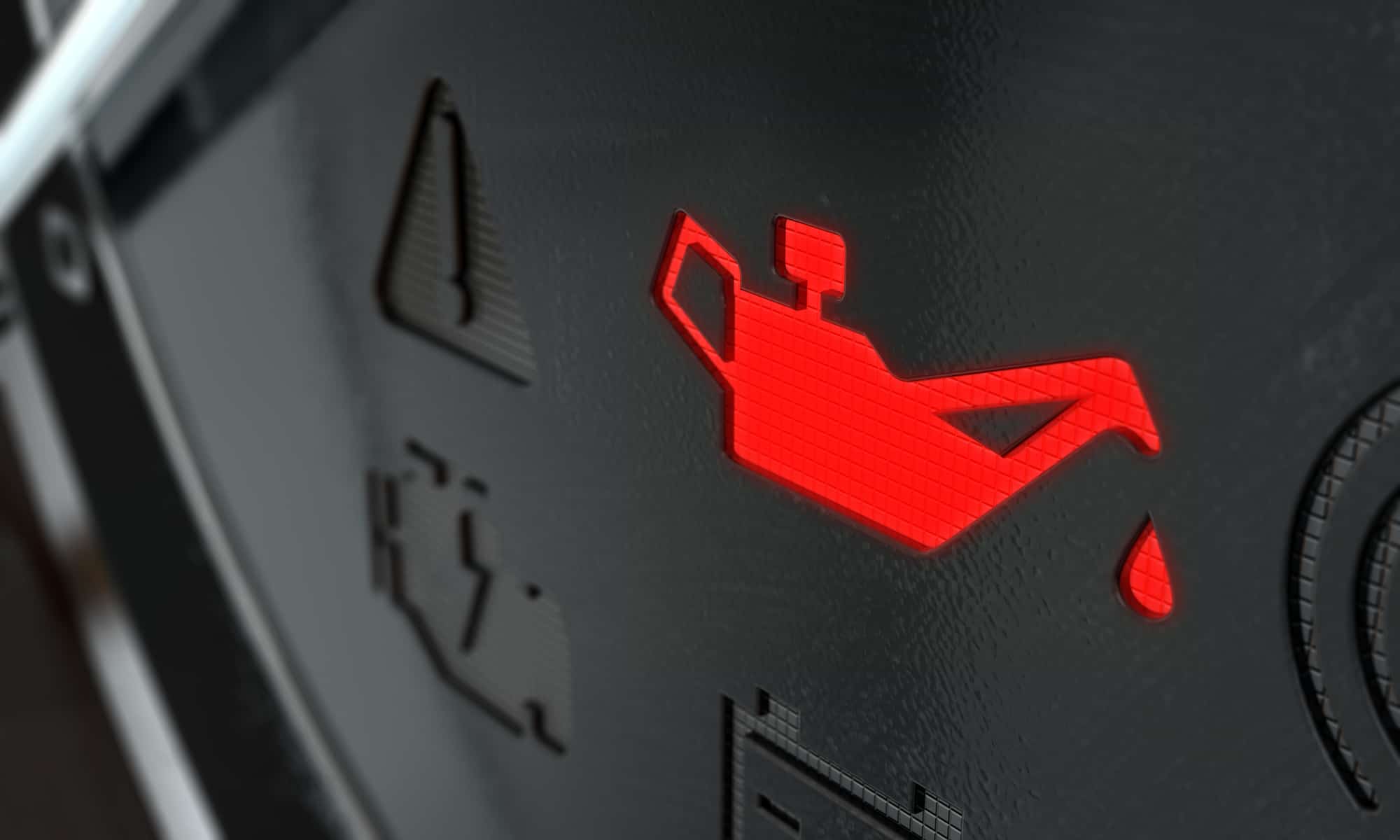Oil pressure is important for an engine because it ensures proper lubrication of engine components, reduces friction and wear, and helps to dissipate heat. If the oil pressure is too low or too high when the engine is idling, it indicates that there’s a problem.
If the oil pressure is too low, the engine may suffer damage, and if it’s too high, it can cause leaks or blowouts. Therefore, maintaining proper oil pressure is crucial for the longevity and performance of the engine.
Several factors contribute to low oil pressure at idle, including low oil level, poor oil quality, and using the wrong type of oil for the engine or weather conditions. Other common causes include a malfunctioning oil pressure gauge, a worn-out oil pump, internal oil leakage, and clogged oil filters. In some cases, underlying engine issues may be the source of the problem.
What Does It Mean If Oil Pressure Is Low At Idle (6 Causes)
If the oil pressure is low at idle, it means that there is not enough oil pressure to properly lubricate the engine components.
This can be caused by several factors, including low oil level, poor quality oil, a faulty oil pressure gauge, a worn-out oil pump, or using the wrong specification oil.
In some extreme cases, it can also be due to engine damage. Engine damage can affect oil pressure at idle by causing a decrease in oil pressure. For example, if the engine bearings or oil pump have worn out due to prolonged use or lack of maintenance, the oil pressure may drop. When the oil pressure is low, the engine may start making unusual noises.
If there is internal leakage in the engine, the oil pressure may also decrease. In some cases, engine damage can also cause an increase in oil pressure, but this is less common. It is important to note that if the oil pressure is low at idle due to engine damage, it can lead to further engine damage if not addressed promptly.
Here are some more causes of low oil pressure in greater detail.
Cause 1. Worn Engine Components
Worn engine components are a common cause of low oil pressure at idle.
As parts wear out, clearances increase, leading to a reduction in oil pressure. Some examples of worn engine parts include worn bearings or piston rings, both of which can lead to insufficient oil pressure.
Worn engine components can also cause low oil pressure when idling by reducing the efficiency of the oil pump, which is responsible for circulating oil through the engine. For example, if the engine rod bearings are worn out, this may prevent the oil pump from generating enough pressure to circulate oil properly, resulting in low oil pressure.
If there is internal leakage in the engine, the oil pressure may also decrease. Engine components such as oil sending switches or a faulty oil pressure gauge can also give a false reading of low oil pressure.
Cause 2. Low Oil Level
Low oil level is another cause of low oil pressure at idle. When there isn’t enough oil in the engine, it becomes difficult for the oil pump to maintain adequate pressure.
Low oil pressure when idling then occurs because there is not enough oil to properly lubricate the engine components, which can lead to increased friction and wear. As a result, the oil pressure may drop, especially when the engine is idling, as there is less oil being circulated through the engine.
Low oil levels can also cause the oil pump to work harder to circulate oil, which can lead to decreased efficiency and lower oil pressure.
Cause 3. Faulty Oil Pump
A faulty oil pump can directly impact oil pressure at idle. The pump is responsible for maintaining the proper flow of oil throughout the engine. If it becomes damaged or wears out, a faulty oil pump can cause low oil pressure when idling by reducing the amount of oil that is circulated through the engine.
The oil pump is responsible for pumping oil through the engine to lubricate the moving parts, and if it is not functioning properly, it may not be able to generate enough pressure to circulate oil effectively.
This can result in low oil pressure, especially when the engine is idling, as there is less oil being circulated through the engine. A faulty oil pump can be caused by wear and tear, damage, or clogging, and it is important to diagnose and fix the issue as soon as possible to prevent further damage to the engine.
Cause 4. A blocked oil filter
An oil filter clogged with dirt or debris can cause low oil pressure at idle.
A blocked oil filter can cause low oil pressure when idling because it restricts the flow of oil to the engine, which can result in decreased oil pressure. The oil filter is responsible for removing contaminants from the oil as it circulates through the engine, and if it becomes clogged, it can restrict the flow of oil to the engine.
This can cause the oil pressure to drop, especially when the engine is idling, as there is less oil being pumped through the engine. A blocked oil filter can be caused by a buildup of debris or contaminants in the filter and not replacing it regularly.
Cause 5. Using the wrong specification oil
Engine oil with the incorrect viscosity or quality can also contribute to low oil pressure at idle.
Using the wrong specification engine oil can cause low oil pressure when idling because it may not be able to properly lubricate the engine components, resulting in increased friction and wear. Different engines require different types of oil with specific viscosity and additives, and using the wrong oil can lead to decreased oil pressure, especially when the engine is idling.
For example, if the oil is too thin, it may not be able to maintain proper oil pressure, and if it is too thick, it may not be able to circulate through the engine properly. Additionally, using oil that does not meet the manufacturer’s specifications can cause excessive foaming, which can also lead to low oil pressure.
Cause 6. Internal engine oil leak
An internal oil leak is another possible reason for low oil pressure at idle. An internal engine oil leak can cause low oil pressure when idling by reducing the amount of oil that is circulated through the engine.
Internal oil leaks can occur due to worn engine components or damage to the engine, which can cause oil to leak out of the engine and reduce the amount of oil available for lubrication.
This can result in decreased oil pressure, especially when the engine is idling, as there is less oil being circulated through the engine. Gasket leaks can cause oil to mix with other fluids in the engine, which can also reduce the effectiveness of the oil and lead to low oil pressure.
Symptoms of Low Oil Pressure at Idle
When the oil pressure of an engine is too low when idling, it can result in several signs, including low oil pressure warning light, engine noise, poor engine performance, burning smell, and oil leaks.
Low oil pressure will cause increased friction and wear, leading to engine damage if not addressed promptly. Therefore, if you see any of the following symptoms it is important to check the oil pressure using a mechanical gauge or have a professional diagnose and fix the issue as soon as possible to prevent further damage to the engine.
Symptom 1. Low Oil Pressure Warning Light
The first and most obvious symptom of low oil pressure at idle is the oil pressure warning light on your dashboard. Most modern cars are equipped with an oil pressure warning light that will illuminate on the dashboard if the oil pressure is too low.
It is important to address this warning quickly, as ignoring the low oil pressure light can lead to permanent engine damage.
Symptom 2. Engine Noise
Low oil pressure can cause abnormal engine noise while idling. This noise is a result of inadequate lubrication in the engine, which can lead to increased friction and wear between metal components.
If you notice a ticking, knocking, or grinding sound coming from your engine at idle, it could be an indication of low oil pressure.
Symptom 3. Reduced Engine Performance
Another sign of low oil pressure at idle is reduced engine performance. If the oil pressure is too low, it can affect the efficiency and power of your engine. You might notice a lack of power, poor acceleration, and decreased fuel efficiency.
Symptom 4. Burning Smell
A burning smell can also be a symptom of low oil pressure because when the oil pressure is low, the engine may start to overheat, which can lead to damage to gaskets and seals that can cause oil to leak out of the engine and onto hot engine components.
This can result in a burning smell, which is typically caused by the oil burning off on hot surfaces when the car is idling. Additionally, if the oil pressure is low due to an oil leak, the burning smell may be accompanied by visible smoke or oil stains under the car.
Symptom 5. Oil Leaks
Oil leaks can be a symptom of low oil pressure because if the oil pressure is too low, it may be caused by an oil leak or by damage to the engine caused by overheating.
Low oil pressure can be caused by a variety of issues, such as a faulty oil pump, a clogged oil filter, or worn engine components, which can lead to decreased oil pressure and increased oil leakage.
Sometimes if oil pressure is too low over a period of time, it can cause the engine to overheat which can cause damage, leading to oil leaking from gaskets, seals, or other engine components that are designed to keep oil inside the engine.
What Next – How to Diagnose and Fix Low Oil Pressure at Idle
To diagnose and fix low oil pressure at idle, start by checking the oil level and condition, and adding oil if necessary. If the oil level is correct, check the oil pressure using a mechanical gauge to determine if the issue is with the oil pump or other engine components.
Check for oil leaks, a clogged oil filter, or using the wrong specification engine oil. If the issue cannot be resolved through these steps, it may require more extensive repairs, such as replacing the oil pump or engine bearings.
1. Checking Oil Level
Park on a level surface and turn off the engine after running it until it reaches operating temperature. Wait for 15 minutes for the oil to collect in the oil pan. Locate the oil dipstick, remove it, and wipe it clean. Insert the dipstick back into its tube, remove it again, and check the oil level. If the level is low, add the correct type of engine oil until it reaches the proper mark on the dipstick.
2. Measuring Oil Pressure
To measure oil pressure, attach a manual oil pressure gauge to the engine. You may need to refer to a workshop manual for more details. Locate the oil pressure sensor, disconnect it, and connect the gauge. Start the engine and allow it to idle. Check the gauge’s reading against the manufacturer’s recommended pressure range. If the measured pressure is below the acceptable range, further investigation is needed.
3. Inspecting Oil Filter
A clogged oil filter can also cause low oil pressure at idle. Check the condition of the oil filter by removing and inspecting it. If it is a paper filter, look for any debris or signs of clogging. If the filter is dirty or clogged, replace it with a new one.
4. Replacing Oil Pump
If the above actions do not resolve the low oil pressure issue, the oil pump might be faulty. The oil pump is responsible for circulating oil throughout the engine, so a malfunctioning pump can directly affect oil pressure. In this case, consult a qualified professional to inspect the oil pump and replace it if necessary.
There are several OBD error codes that can indicate a faulty oil pump, including:
- P0520: Engine Oil Pressure Sensor/Switch Circuit Malfunction
- P0521: Engine Oil Pressure Sensor/Switch Range/Performance
- P0522: Engine Oil Pressure Sensor/Switch Low Voltage
- P0523: Engine Oil Pressure Sensor/Switch High Voltage
- P0524: Engine Oil Pressure Too Low
- P06DD: Engine Oil Pressure Control Circuit Stuck Off
- P06DE: Engine Oil Pressure Control Circuit Stuck On
These error codes indicate various issues related to the oil pressure sensor, oil pressure control circuit, and oil pressure itself, which can be caused by a faulty oil pump.
How Can You Prevent Low Oil Pressure at Idle?
There are several ways to prevent low oil pressure at idle. By following regular maintenance routines, monitoring oil pressure, and using the right oil viscosity, you can help prevent low oil problems when idling.
1. Regular Maintenance
Adhering to a consistent maintenance schedule is essential for ensuring the longevity and performance of your vehicle. Some key maintenance tasks include:
- Checking and changing oil regularly
- Replacing the oil filter as needed
- Regularly inspecting and replacing worn engine components
- Monitoring oil pressure and addressing any sudden changes
2. How Can You Increase the Oil Pressure at Idle?
If you are experiencing low oil pressure at idle, there are a few steps you can take to increase the pressure:
- Top off your engine oil to the proper level
- Change your oil filter if it is clogged or dirty
- Inspect and replace any worn or damaged engine components
- Consult a professional mechanic to diagnose and fix any underlying issues
3. Using Correct Oil Viscosity
To maintain proper oil pressure, it is important to use the correct oil viscosity for your vehicle. Your vehicle’s manufacturer will provide recommendations for the appropriate oil viscosity based on factors such as engine type, climate, and driving conditions.
Using the wrong viscosity can lead to reduced oil pressure, as the oil may be too thin to create sufficient pressure or too thick to flow quickly enough.
FAQs
1. What is normal oil pressure at idle in PSI?
Normal oil pressure at idle may vary depending on the make and model of the vehicle. Generally, oil pressure should be between 20 to 40 PSI (pounds per square inch) at idle.
You should consult your vehicle’s owner manual for the manufacturer’s specific recommendations for your car’s engine.
2. Will thicker oil increase oil pressure?
Using thicker oil may temporarily increase the oil pressure in your engine, especially if there is excessive wear in certain parts. However, it is not advisable to use thicker oil as a long-term solution, as it may reduce overall engine performance and even cause damage.
It is essential to use the recommended oil viscosity specified by your vehicle’s manufacturer in the owner’s manual.
3. Can I drive the car with low oil pressure?
Driving a car with low oil pressure can cause severe engine damage if not addressed promptly. Low oil pressure indicates that there might be insufficient lubrication in the engine, which can lead to increased friction, overheating, and eventually, engine failure.
If your vehicle’s engine shows signs of low oil pressure, it is highly recommended to turn off the engine immediately, investigate the cause, and fix the issue before continuing to drive.







I’ve recently noticed that my car’s oil pressure warning light comes on intermittently when I’m idling at traffic lights, but it seems to go off once I start moving again. Could this be an early sign of a more serious issue, and what steps should I take to diagnose and address this problem to avoid potential engine damage?
I’ve noticed my car’s engine making a ticking noise lately, especially when it’s idling. Could this be related to the oil pressure being too low, and what steps should I take to diagnose and address it?